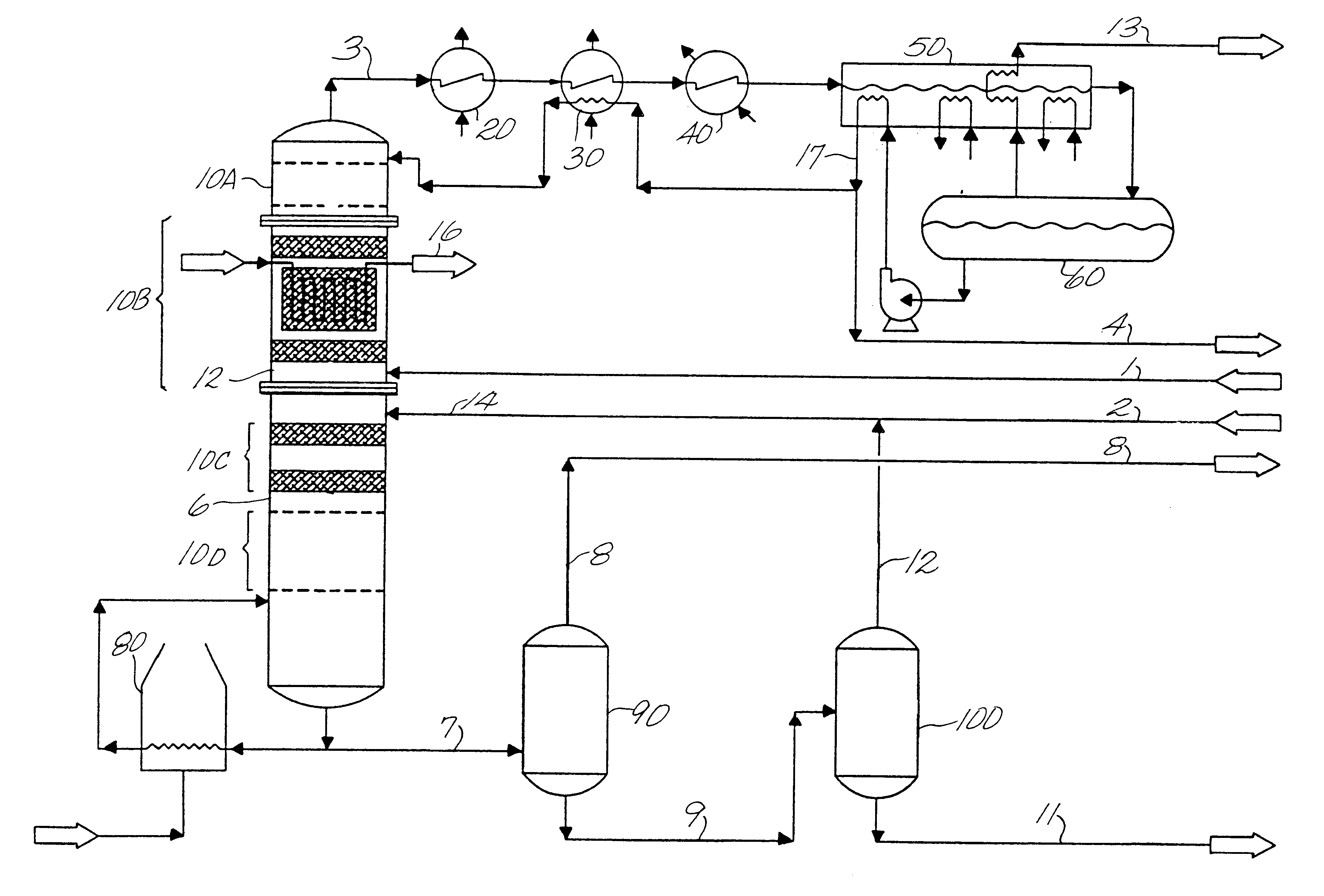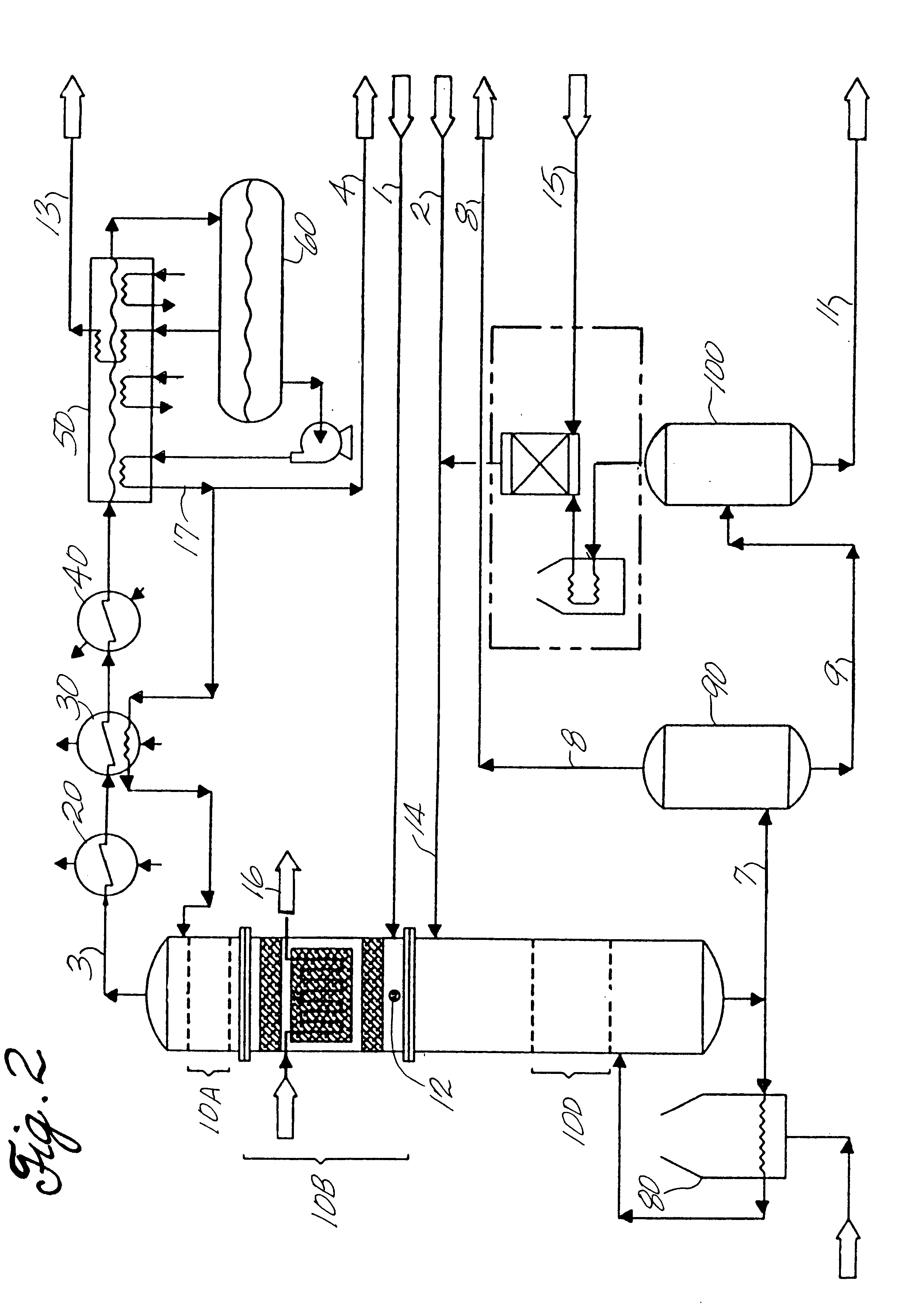Method for producing ethylbenzene
a technology of ethylbenzene and ethylbenzene, which is applied in the direction of fractional condensation purification/separation, sustainable manufacturing/processing, and separation processes, etc., can solve the problems of cumene in the ethylbenzene product, unacceptable chain and side reactions, and isopropyl benzene, commonly known as cumen
- Summary
- Abstract
- Description
- Claims
- Application Information
AI Technical Summary
Problems solved by technology
Method used
Image
Examples
Embodiment Construction
For illustration and consistency purposes, an ethylbenzene production system for 380,000 tonne per year of ethylbenzene is described. The streams and apparatus designations are depicted in FIG. 1. The assumed production rate is based on 345 operating days per year. The dilute ethylene feed (stream 1) to the facility is originated from a naphtha based olefin plant. Stream No. 1, at a pressure of 25 kg / cm.sup.2 -g and a temperature of 30.degree. C., has the following
Stream No. 2 contains impure benzene from a pyrolysis gasoline source. More specifically, Stream No. 2 comprises:
At the end of the run, there is a total ethylene utilization 98% and 0.8% ethylene losses to heavy aromatics. Thus, 97.2% of the ethylene is converted to ethylbenzene, and the balance is routed to gaseous and liquid fuels. Impurities build up in the liquid of the reflux drum 60 is 27 wt %. The system does not contain a purge reactor. Ethylene enters the bottom of the ethylation catalyst bed and reacts with benze...
PUM
| Property | Measurement | Unit |
|---|---|---|
| temperature | aaaaa | aaaaa |
| temperature | aaaaa | aaaaa |
| temperature | aaaaa | aaaaa |
Abstract
Description
Claims
Application Information
 Login to View More
Login to View More - R&D
- Intellectual Property
- Life Sciences
- Materials
- Tech Scout
- Unparalleled Data Quality
- Higher Quality Content
- 60% Fewer Hallucinations
Browse by: Latest US Patents, China's latest patents, Technical Efficacy Thesaurus, Application Domain, Technology Topic, Popular Technical Reports.
© 2025 PatSnap. All rights reserved.Legal|Privacy policy|Modern Slavery Act Transparency Statement|Sitemap|About US| Contact US: help@patsnap.com



